2021 Japan SEO Trends: 5 Experts Weigh In With Their Forecasts
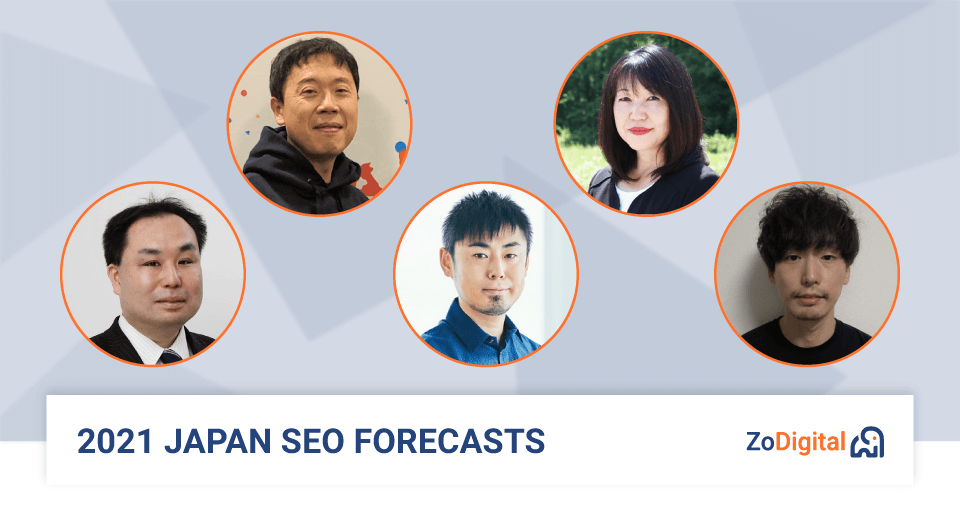
In this article we asked some of the most influential Japanese SEOs their forecasts and trends for 2021. Learn more about hot topics such as EAT, Core Web Vitals, UX, as well as Japanese Language and Market differences.
Our esteemed panel includes experts such as Kenichi Suzuki, whose SEO blog is read by thousands of people each day, and Motoko Hunt who is quoted in many English SEO publications, Shigeki Matsuo, who authored a best selling SEO book, and Takahiro Watanabe who started the first Japanese SEO agency. This is truly an amazing group of experts.

We asked our experts their opinions on the following topics:
- How has SEO changed in Japan over the past two years?
- What will be the most effective SEO measures and technologies in 2021?
- What are the primary differences between Japanese SEO and English SEO?
Read on to find out what the experts have to say.

Kenichi Suzuki
Overseas SEO information blog Author,
Faber Company Co.Ltd. Director Search Advocate
Kenichi Suzuki might just be the most famous SEO expert in Japan. His Overseas Information Blog is one of the most famous SEO-specific blogs in Japan. Per AHRefs, it gets about 23,000 visits PER DAY. At Faber Company, his main role is to cover search-related conferences and events, and serves as an instructor at seminars. Lately, he has started providing SEO information on YouTube. He is certified as a Product Expert in the Google Help Community, and has close ties to well known Google employees. In Japan’s Search Central Help Community, he was the first Japanese to qualify as a Platinum Expert.
His mission is to teach the proper methods of SEO to Japanese webmasters.
Q1. How has SEO changed in Japan over the past two years?
In the so-called YMYL area (“Your Money or Your Life”), high EAT has been required for the past few years. This tendency is getting stronger day by day, every time a core update is released. Google search in Japan is no exception to this trend.
EAT, stands for the following:
- Expertise (専門性)
- Authoritativeness (権威性)
- Trustworthiness (信頼性)
How to improve EAT has become a central issue for publishers.
As another topic, I feel that the number of businesses that recognize the importance of local search has increased in Japan as well. At overseas conferences, there are almost always sessions on the theme of local SEO, and there are also conferences that specialize in Local Search.
Local SEO specialists have begun to play an active role in Japan as well, and have begun to disseminate useful information. Even in normal web search, the physical location of the user may affect results. I expect the importance of Local SEO to become an even more important theme in the future.
Q2. What direction do you think SEO will take in 2021? What do you think are the most effective SEO measures and technologies in Japan in 2021?
In addition to the importance of EAT and local SEO, what I personally want to pay attention to is the user experience (UX). As a page experience signal, Google is currently using four UX factors for ranking signals:
- Mobile Friendly
- HTTPS
- Safe Browsing
- No Intrusive Interstitials
In May of this year, Google will release algorithm updates around Core Web Vitals.
From a ranking perspective, page experience signals aren’t very influential. However, along with relevance and quality, UX is certainly becoming a non-negligible factor in search.
Whether it has a big impact on SEO or not, and whether it has a direct impact, we should actively work on improving UX. UX improvement isn’t just about the five page experience signals, it’s all about the user experience. If you succeed in pleasing users, it will also have a positive effect on search engine rankings. A good experience not only helps improve authority and trust, but also improves your reputation.
Q3. How do you think SEO measures in Japanese are different from SEO measures in English?
I don’t think there is a big difference, but we know many new features of Google Search are introduced in the US for English queries first. Some of them are only available in Google US for a while, and may never come to Japan.
If you can anticipate the introduction of a new feature, you can gain an early lead against your competitors. Although effort could be wasted if the new features are not introduced.
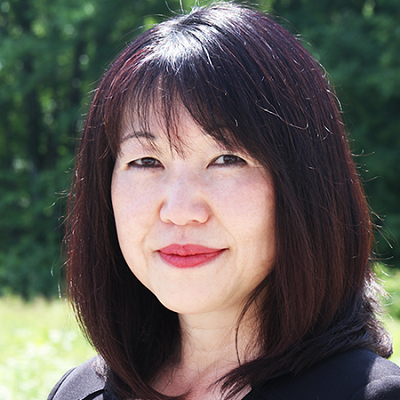
Motoko Hunt
President, International Search Marketing Consulting
Motoko is another famous SEO expert, not just in Japan but the international community as well.
Since Motoko established AJPR in 1998, she has been providing SEO/SEM consulting services to companies around the world targeting Japan, Asia, and other markets. She has made a big impact on some of the world’s most popular multinational brands with her search marketing campaigns.
Her SEO/SEM consulting services with her extensive knowledge of Asia and Japanese market have made a big impact on some of the world’s popular multinational brands’ search marketing campaigns.
She writes about International SEO and SEM for several online and printed media including Search Engine Journal & Search Engine Watch. She is a frequent speaker at the search conferences globally such as PubCon, and is a member of the judges panel of the Global Search Awards.
Q1. How has SEO changed in Japan over the past two years?
I have increased my knowledge and skills regarding SEO for my clients. And I now focus on SEO tactics that are effective in the long term. The reason why is that clients are no longer looking for proposals of short-term SEO fixes relying on Link Building.
In addition, the reality is that companies that cannot afford to be in charge of SEO are falling further behind. I believe there is a big difference in SEO efforts between urban areas and rural areas in Japan compared to Europe and the United States. Unfortunately this difference has not improved much in the last few years.
Q2. What direction do you think SEO will take in 2021? What do you think are the most effective SEO measures and technologies in Japan in 2021?
For companies to continue investing in SEO, SEO needs to contribute to the success of their business. It is necessary to build an SEO project with goals that are directly linked to business growth, rather than measuring the effect only by keyword rank or number of visitors.
For example, if you are creating content, what kind of content is needed? Why do you need it? Can you justify it with data? And if you change the design of the site, what is the problem with the current design and how to improve it? If you don’t clarify, it won’t lead to ROI.
Especially in 2021, I think that the number of places to renew the site will increase due to the influence of Core Web Vitals. If you do not do it after understanding the crawler and server, it will be a site that looks good but cannot be improved.
In addition, the flow of content within the site and UX will greatly affect the achievement of the ultimate goal of SEO. In that sense as well, teamwork is required between the client who understands the UX of the site and the SEO practitioner.
Q3. How do you think SEO measures in Japanese are different from SEO measures in English?
Since the search engines targeted by SEO such as Google and Bing are the same in Japan and Europe and the United States, it can be said that the SEO in terms of technology is the same. However, it is the users (customers) that make the difference. There are differences in the information you are looking for in the search, and in the actions you take on the site. Even if Western sites translate the content into Japanese, they cannot succeed in Japan because they have not taken the appropriate SEO measures that understand the user’s intent.
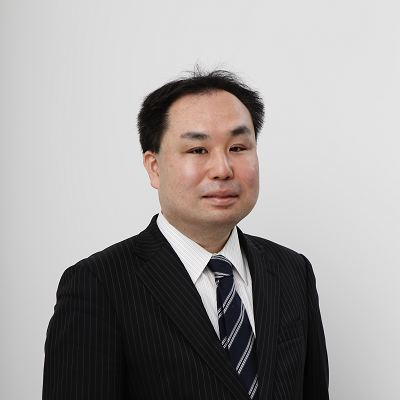
Takahiro Watanabe
IREP SEM Research Institute
Takahiro Watanabe brings over 23 years of search marketing experience as a front-runner in the search field, having co-founded Japan’s first SEO agency, E-Promote. Takahiro has a strong technological background combined with vast online marketing expertise. He dedicates much of his time researching the rapidly changing digital marketing industry specialized in search marketing to achieve client’s goal, and respond to changes in the landscape.
Takahiro has been a panelist, speaker and presenter for ad:tech Tokyo, SEO/Content Marketing related conferences and an author of a number of books on search marketing. He leads SEM Research Institute and strategic partnerships to help clients and search engine companies.
Q1. How has SEO changed in Japan over the past two years?
I will talk from three points: “Technical SEO”, “UX / UI”, and “Content Strategy”.
First, about technical SEO. I’m mostly involved in SEO projects for large sites, but I have the impression that the number of companies that are introducing HTTPS, improving page load speed, or newly introducing AMP or structured markup is steadily increasing. In recent years, Google has continued to raise awareness through information dissemination to developers, and I think this is partly because engineers have become interested and actively working on it. Core Web Vitals will be introduced in the ranking signal this year and we expect this trend to continue.
Secondly about UX / UI. Companies that have suffered a significant drop in search rankings as a result of the Google Core Update are now actively working to improve their UX / UI to improve search traffic. For example, the method of posting information “Above the fold” and the amount of information displayed per page (on the information list page) must be determined by looking at the Analytics report after the actual launch. In the past, my proposals for testing new changes were often refused. But in recent years, I think that the number of companies that understand the work of UI testing has increased. In some cases, search traffic has improved after changing the screen design to meet the needs of web users.
Finally, about Content Strategy. I will omit the detailed explanation, but in the Japanese SEO market, Yahoo! JAPAN has the largest search share for a long time (until 2010) instead of Google. The first search ranking is emphasized above all, external backlinks (including paid links). Under such circumstances, when Google announced the Panda update, it could be said that no company had good content.
After the Panda update, Japanese companies also started to work on content production. Until around 2017, most of the content produced was low quality content with little value. But in the last two years, this situation has changed.
As far as major companies are concerned, the number of cases where crowdsourcing does not allow someone who does not know their background or expertise to create an article appropriately is reduced, and instead, companies that specialize in content production or professional writers who are familiar with the topic they want to produce are asked. There is a change in trying to send appropriate content. However, Japan still has bad practices that stick to making texts. Originally, selecting an appropriate design and format according to the audience and the value you want to deliver, such as videos, illustrations, and four-frame cartoons, should be expected to increase the influx of searches in the medium to long term.
Q2. What direction do you think SEO will take in 2021? What do you think are the most effective SEO measures and technologies in Japan in 2021?
I have been working as an SEO in Japanese and North American (English) for over 20 years, so I will talk about SEO in 2021 after making a preface about the circumstances unique to Japan from that perspective.
Japanese companies, especially large companies, do not necessarily have the necessary Digital Marketing knowledge and skills for web personnel, as personnel change regularly during job rotation (department changes at regular intervals). Taking SEO as an example, there is a tendency to leave everything to external advertising agencies and web production companies. Therefore, compared to Western companies, the Japanese companies tend to have inconsistent and short-term strategies.
Based on the above story, the most effective SEO measures in Japan are as follows. First, to operate the site faithfully toward the user. And second, to actively utilize channels other than search.
The first point can be divided into UX and content. In recent years, the story of “Let’s focus on sites (contents) that are good for users” has been repeated over and over. But Japan does not follow this rule regardless of the size of the company. And it just continues to create low-quality content for Google. In other words, we need to seriously understand the needs and experiences that users want, and incorporate those needs into the design, information, and format of the content. And then continuously disseminate information will raise your reputation on Google and lead to an increase in search traffic.
Although Japanese companies have finally begun to work on UX (screen design), as mentioned in the first half, all the work is often outsourced to external companies. So it takes a lot of time for them to recognize issues and to implement improvements. In other words, it would be effective to establish an organizational structure that works faster than other companies, adhere to the basics, and make improvements with the aim of enhancing the search experience.
Second, in order to improve the EAT (Expertise, Authoritativeness, Trustworthiness) of websites, it is possible to actively utilize not only organic search channels, but also other channels such as Social and Advertising to increase online exposure. However, these efforts are still a minority in Japan. This is because Japanese webmasters are not accustomed to using Digital Media in this cross-cutting (AKA Omnichannel) manner.
In my opinion, the Japanese SEO market is a few years behind the Western market. Therefore, what has become established as a best practice in English-speaking countries is often not practiced in Japan. In other words, even if there are differences in languages, there are no particularly effective measures specific to Japan. But at the same time, it can be said that faithfully following the basics will give you an advantage in SEO for the Japanese market.
Q3. How do you think SEO measures in Japanese are different from SEO measures in English?
In SEO of multilingual websites, not limited to Japanese, it is important to understand and express the culture of the other party, rather than simply translating the language. This time, I will touch on language issues regarding SEO issues specific to Japanese.
Japanese uses Kanji, Hiragana, and Katakana characters. There are many expressions that refer to the same thing (synonyms), and the same pronunciation can have completely different meanings (homonyms).
For example, the English word “dress” is called ワンピース (“one piece”) in Japanese. However, when searching (in the sense of fashion), many Japanese search for ワンピ (“one pi”). This is because Japanese people who search for ワンピース (“one piece”) , which is a literal translation of Japanese, are likely to be looking for “ONE PIECE” (a japanese manga).
In addition, “Smart Phone” (Mobile Phone) is often written in Japanese as スマートフォン (sumato-fon)「スマホ」(sumaho)「スマフォ」and (sumafo) “smartphone. When referring to the Smartphone device itself, it is referred to as スマートフォン(“smartphone”), but when referring to the Smartphone case, the notation スマホ(“sumaho”) is often used.
As of 2021, with the development of technology for handling Google synonyms, the impact of these notational differences on SEO is relatively small. However, the difference in the notation written on the web page affects the behavior of the Japanese who read it. For example, the click rate in the search results and the browsing behavior of the page-so you have to choose the appropriate word.
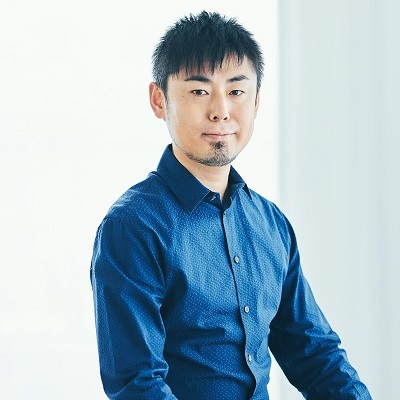
Mr. Shigeki Matsuo
Representative of Web Rider Co., Ltd.
Shigeki Matsuo lives in Kyoto Japan. At Webrider Co, he is responsible for General Web Marketing Consulting centered around SEO. He asserts that the product value of many companies is converted into content from their unique perspective. This contributes to name recognition, branding, and building relationships to attract customers. His book, Silence Series (“Silence Web Writing” and “Silence Web Marketing”), is a best-seller, with over 150,000 copies in electronic and print form.
Q1. How has SEO changed in Japan over the past two years?
This has been a trend that has been seen for two years, EAT is more emphasized, and companies that disseminate information responsibly are more highly evaluated.
In addition, by enriching the search results, it is important not only to raise the search ranking, but also how to exert an online presence.
Q2. What direction do you think SEO will take in 2021? What do you think are the most effective SEO measures and technologies in Japan in 2021?
More than ever, “site content” will be valued to improve the search user experience.
What is important is not the idea of capturing Google, but the awareness of “creating high-quality search results together with Google and realizing convenience for search users.”
In addition, as commoditization progresses in many fields, branding that leads to designated search continues to be important.
During this Coronavirus period, reliable companies and brands will be selected in search results. For that reason, it is important to operate a site that is altruistic, friendly and reliable, rather than selfish and computational.
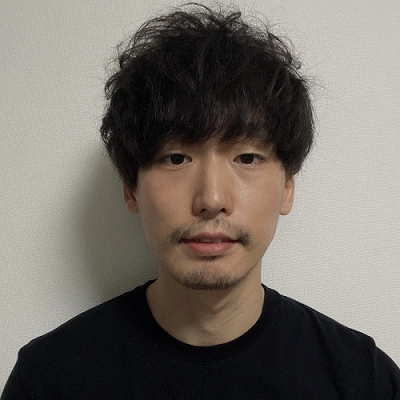
Shohei
Operator of the Heysho Website
Shohei is an up-and-comer in the SEO industry in Japan.
He works as a manager of the SEO and Content Team at a foreign-affiliated company in Tokyo. His areas of expertise include SEO, UX Research, Web Production, blogging, Google Analytics, Notion and Microsoft Team. He has been working on the web since 2012.
Q1. How has SEO changed in Japan over the past two years?
Over the last two years, Google’s algorithms have favored well-known brands, and search rankings of corporate sites have been on the rise. Also, the scope of work for in-house SEO staff has expanded. For example, site acceleration, local SEO, SERP SEO, Google Discover measures, work with UX / PR / branding team, etc.. Also, the number of personally written affiliate sites has dropped sharply from the rankings.
Q2. What direction do you think SEO will take in 2021? What do you think are the most effective SEO measures and technologies in Japan in 2021?
The highlights of 2021 are Core Web Vitals and the Bert update. However, I don’t think the essence of SEO will change in the future. The essence of SEO is defined as “providing the best UX to the target users in the search engine process up to the purchase of the product”.
Q3. How do you think SEO measures in Japanese are different from SEO measures in English?
The biggest difference is that Japanese has many synonyms. Therefore, many people think that the search volume of SEO tools is just a guide, and attach importance to suggestions and related keywords.
Also, building backlinks is very difficult in Japan. If it’s just an email, it’s usually ignored. But if you meet in person, you can easily get a backlink. Finally, Japanese sites and blog articles have a unique design.
Summary & Takeaways
Many experts have mentioned EAT, Expertise and Authoritativeness, and Trustworthiness are important, especially for YMYL (Your-Money-or-Your-Life) type websites. But this concept is likely to be expanded as well in 2021.
In addition, performance will become a hot topic, particularly around Core Web Vitals, which Google plans to introduce in May. Webmasters will need to speed up their sites.
A number of our Japanse SEO experts agree that it’s best to focus on the contents and the user experience (UX), and not focus so much on algorithms. The accuracy of information, as well as how it is present are important ranking factors.
While most experts concur, the basic mechanics of SEO is the same for Japanese and English. But it’s clear there are fundamental differences in how customers may use your site, language expression, and business culture. Some really good examples were provided above. Your approach to SEO needs to be different when investing in Japan.
About the Author Jeff Crawford
Jeff Crawford is a Digital Marketing expert, technologist and Manager. He has worked for technology companies in Silicon Valley such as Apple, WebTV and Microsoft. He has lived in Tokyo Japan since 2004, working for companies such as Microsoft KK and Adobe Systems Japan. Jeff is founder of Zo Digital Japan, an SEO and Digital Marketing agency based in Tokyo. Jeff started the Tokyo Digital Marketers Meetup in 2016, which now has over 2000 members. He has also presented about Digital Marketing at such events as Ad-Tech Tokyo, WordCamp Tokyo, Japan Market Expansion Competition (JMEC), and the Japan Association of Translators (JAT).
